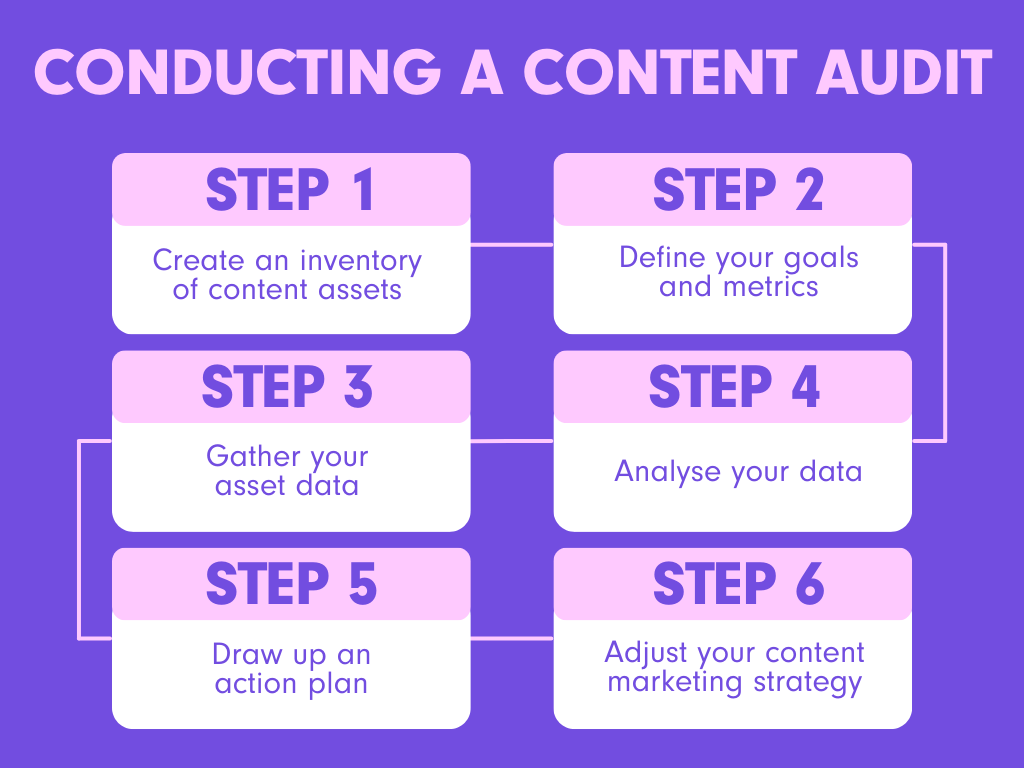How to be a copywriter

Welcome to our new series, where we ask the RKH team all about their roles: how they got here, what…

What’s a content audit and why should you perform one? We’ve got the answers here. Read on to find out…
A content audit is a thorough review and assessment of the existing content on your website. Everything from the homepage to your latest blog post should be audited so that you can get a clear picture of the quality and usefulness of your site content.
There are multiple reasons for conducting a content audit. You might not have done one before and feel it’s time to review and tidy up your site’s content, or you may have noticed a dip in performance, leads or conversions, and content may be part of the reason for that decline. Whatever your reason for carrying out an audit, it’s likely to be very useful if done properly.

A content audit can help you identify content that is out-of-date, redundant or of lower quality. You can then update this content to make it more useful for users, improve keyword optimisation and internal linking, and generally boost the page’s quality and authority. Doing this will help improve that page’s standing in the search engine results pages (SERPs). The more content to which you apply this process, the more authoritative your brand appears.
Having lots of content on your site is great, but if it lacks structure, detail, and clear direction, it won't boost your conversion rate. Detailed, informative content is crucial to prompt user action. Unengaging or irrelevant content won't keep users interested, let alone lead them to sign up or contact you.
Don't forget the importance of a clear call to action (CTA). Without CTAs, users may not know what to do. Effective content combined with a visible sign-up, subscribe, or purchase button is more likely to drive conversions. Prioritise updating pages lacking CTAs.
Conducting a content audit helps pinpoint underperforming pages. Identify which pages drive engagement and conversions and which ones lead to high bounce rates. Once you identify weaknesses, you can improve them to encourage user action.
A content audit helps ensure that your website addresses your audience’s needs effectively. It allows you to identify any gaps in your content where key topics, customer pain points, or industry trends might be missing. By understanding what your audience is searching for and ensuring your content provides the right solutions, you can improve engagement and attract new visitors.
Additionally, a content audit provides an opportunity to assess whether your current content aligns with the latest industry developments or audience expectations. If your content no longer resonates with your target market, updating it to reflect current interests can enhance user engagement and brand trust.
A content audit should always include an analysis of what your competitors are doing; this means you can identify gaps in the market and areas where your competitors are underperforming. You can then create content to help you outperform them and gain an edge in your industry.
If you regularly create legal or regulatory content, or content that otherwise has to adhere to strict guidelines, an audit can help you identify any pieces that may fall foul of said guidelines. Catching and updating or removing content like this can help improve compliance and reduce the risk of potential legal implications and ramifications.
Improving the quality of your content is a very effective way of improving your brand’s reputation. If people associate your brand with quality, they’re likely to return to it, which will help to build brand loyalty.
A successful content strategy should include a focus on evergreen content—content that remains relevant and valuable over time. However, even evergreen content requires regular updates to ensure it stays accurate and useful. A content audit helps to highlight older posts that might need new statistics, refreshed examples, or additional insights to maintain their authority and effectiveness.
By periodically updating evergreen content, you can continue to drive traffic, engagement and conversions without having to create entirely new content from scratch. This keeps your website fresh and ensures that your brand remains a trusted source of information.
There are plenty of factors that can affect user experience, from menus to layouts and loading times. However, content can also be a factor; if your users have to navigate through pages and pages of content to find what they’re looking for, they’re likely to give up and less likely to come back to your site. Streamlining your content will make your site easier to use and will help to increase engagement and the time your users spend on a page.
Never underestimate the impact that content can have on the perception, performance and reputation of your brand. Your content should be maintained and reviewed regularly, just as you would for other areas of your business. When performed properly, there are so many benefits to be had from a content audit. It takes time, planning and a lot of organisation, but tweaking, tidying and improving your content can work wonders for your brand.